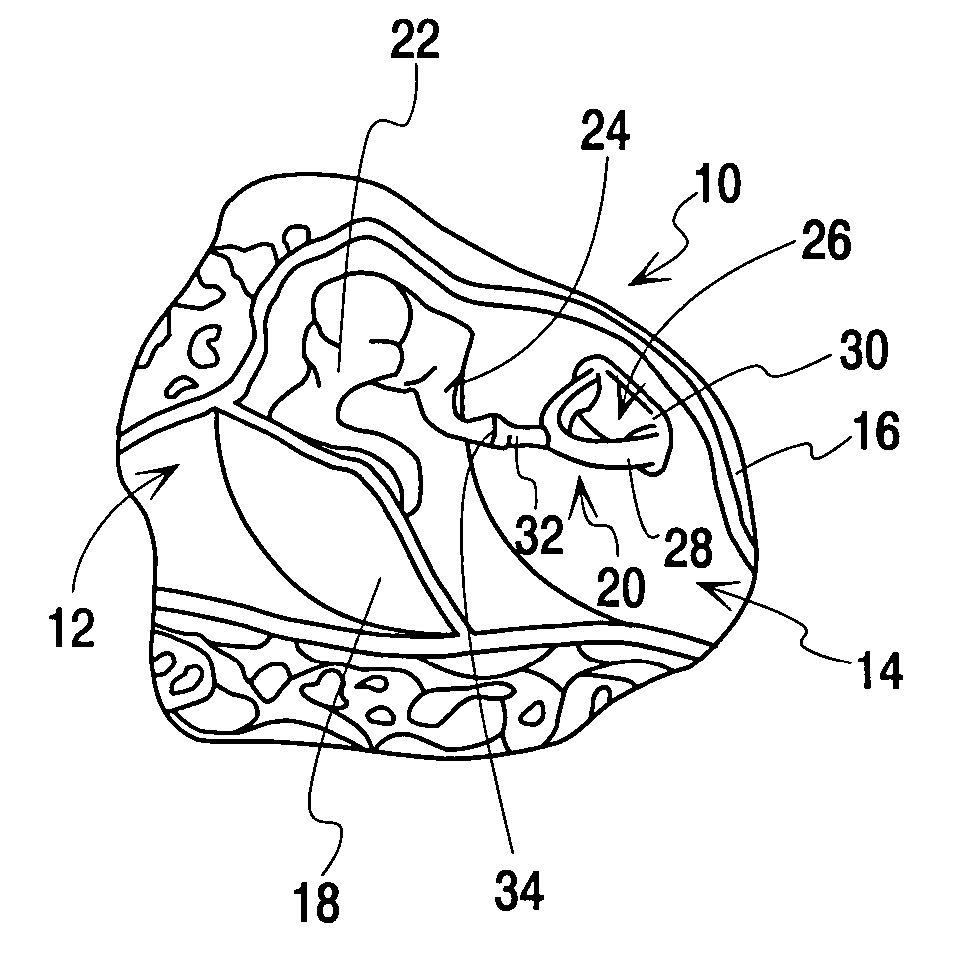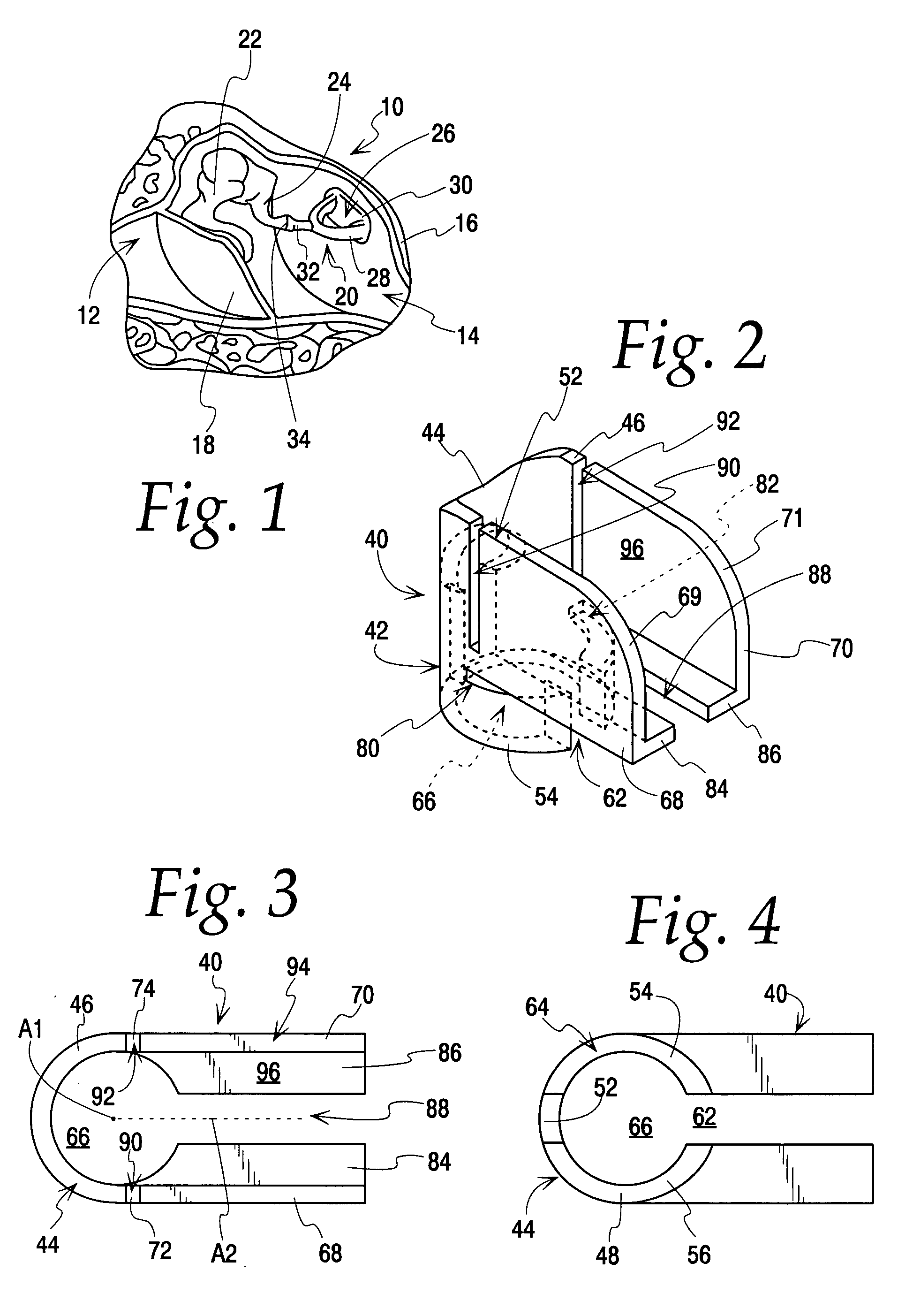Middle ear prosthesis
a middle ear and prosthesis technology, applied in the field of ossicular prosthesis, can solve the problems of conductive hearing loss, inability to easily adapt to custom, inability to fix or crimp an ossicular prosthesis to bone, etc., and achieve the effect of facilitating the reception of the head
- Summary
- Abstract
- Description
- Claims
- Application Information
AI Technical Summary
Benefits of technology
Problems solved by technology
Method used
Image
Examples
second embodiment
[0049]FIGS. 9-12 illustrate an ISJ prosthesis 100 according to the invention. The ISJ prosthesis 100 differs from the ISJ prosthesis 40, discussed above, in that its design is more particularly adapted for “self-crimping”. The ISJ prosthesis 100 is manufactured of a unitary body of a shape memory material. The shape memory material may be a shape memory alloy, such as Nitinol, or a shape memory polymer, such as Calo-MER (The Polymer Technology Group, Berkeley, Calif.). With such a shape memory material, a portion of a prosthesis body can be deformed into an open configuration to provide spacing to allow the prosthesis to be placed over one or more bones, and when heat is applied to the prosthesis, the prosthesis self closes to lock around the bone structure.
[0050] Nitinol is a shape memory alloy that has proven biocompatibility. It can be manufactured via established means. The “memory” of the material is set while the material is in its martensitic phase. During this “shape setting...
embodiment 304
[0059]FIG. 22 illustrates an adjustable length prosthesis 320, similar to the prosthesis 300 of FIG. 18, with the head removed, according to an alternative embodiment of the invention. In this embodiment, the prosthesis 320 includes a shaft 322 and a cup 324. The cup does not open as in the embodiment 304, above. Instead, a tab 326 is provided for locking the arch of a stapes when received in rounded notches 328. The tab 326 is shown in the shape set position in FIG. 22. FIG. 23 illustrates the tab 326 deformed for packaging. During the operation, the stapes head is received in the cup 324, with the arches resting in the notches 328. The shaped memory material is heat activated such that the tab 326 returns to the position of FIG. 22, extends through the stapes arch and under the capitulum of the stapes dead to grasp and retain the stapes.
PUM
 Login to View More
Login to View More Abstract
Description
Claims
Application Information
 Login to View More
Login to View More - R&D
- Intellectual Property
- Life Sciences
- Materials
- Tech Scout
- Unparalleled Data Quality
- Higher Quality Content
- 60% Fewer Hallucinations
Browse by: Latest US Patents, China's latest patents, Technical Efficacy Thesaurus, Application Domain, Technology Topic, Popular Technical Reports.
© 2025 PatSnap. All rights reserved.Legal|Privacy policy|Modern Slavery Act Transparency Statement|Sitemap|About US| Contact US: help@patsnap.com



